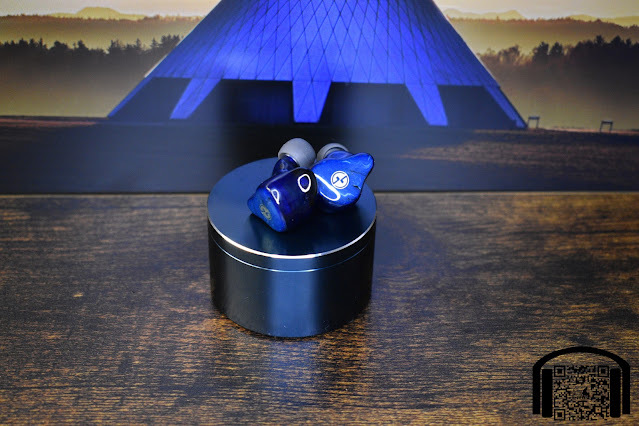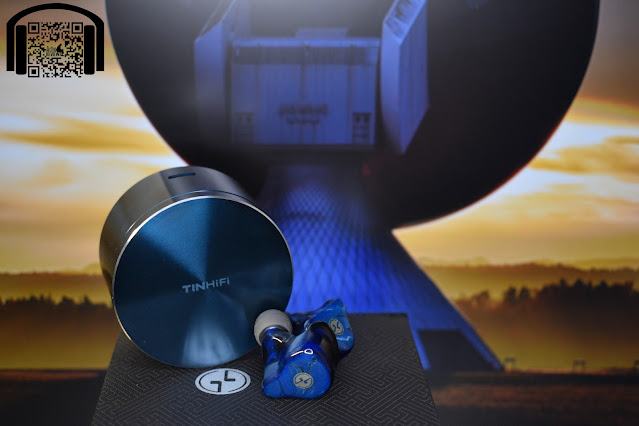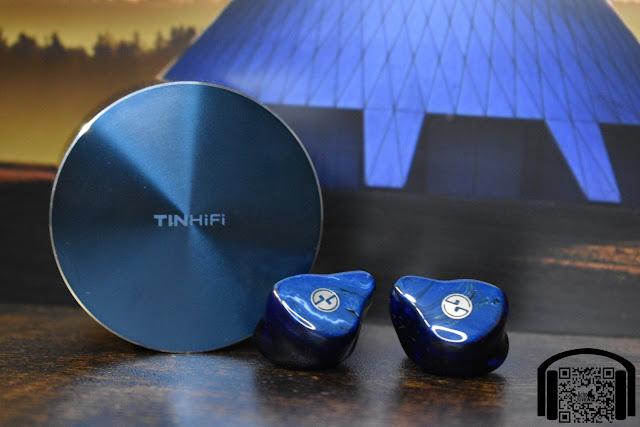The Tin T3 Buds were sent to me by Linsoul for me to share my opinions and publish this review. They have not made any specific requests and therefore, as usual, I will be as unbiased and honest as possible.
You can find a (non-affiliate) link to the T3 Buds via Linsoul by visiting the version of this review published on my blog (link at the end of this review).
Intro…
I don’t think anyone can deny that Bluetooth has come a long way recently and that it is going to continue to improve, becoming the main audio solution for the general public. Yes, there are still going to be the audiophiles who focus on improving things and getting performance that only cables can bring (at this moment in time), along with those who simply prefer cables (me being one of them), but the majority of people will be more than happy to opt for bluetooth solutions.
It’s also true that IEMs have come a long way in recent times, getting better by the day (or so it seems) at prices that are getting cheaper and cheaper. That is bringing us to start seeing wireless IEMs in the “middle ranges” from companies who have focused mainly on wired options until now. By “middle ranges”, I am not referring to prices, it is more in reference to products from companies that are quite a step above the usual no-name TWS options on Amazon but way below some of the higher end (and more known) options like Apple, Samsung, etc.
Tin Hifi are one of those companies, bringing in the T3 Buds at a price of just under 90€. As Tin Hifi have had some good success with some of their wired IEMs (and some not so good), it is interesting to see what they can offer in this TWS world.
Presentation…
The box that the T3 Buds arrive in is fairly simple, just a black box (although the box does have a nice finish to it) inside a white sleeve with the brand and model on the exterior.
Inside the box we get the TWS IEMs inside their charging case, 4 sets of silicone tips, a USB to USB-C charging cable and the user manual/documentation.
That is the extent of the contents but except for maybe a few more kinds of tips, not much else that can really be asked for.
Build and aesthetics…
The charging case is round and rather compact, although I do find that the shape makes it a little more uncomfortable to carry than the oval or rectangular models from other companies. It is a very nice looking case though, in a dark metallic blue finish with a nice texture to the outside.
It may just be me but I did find it was a little more difficult to get them out of the case than with other models but that also means that they sit well in their charging ports, avoiding them moving and not charging correctly (something that I have experienced with other TWS IEMs).
The Buds are very similar to the T3+ in looks and shape, although these are slightly smaller with a little change to the ergonomics. They feel the same in the ears, except for the lack of cable over the ear of course, which means that I do find them comfortable. They are obviously a little heavier than the T3+, which is to be expected as they have the electronics inside them, but are not overly heavy and I find they can be worn for longer periods without fatigue.
Overall I like the aesthetics of the T3 Buds, as I did the T3+, giving them a bit of a premium look. They also seem to be well built, although that is something that will need more time to confirm.
Functionality…
The functionality is similar to many other models, using a combination of short or longer presses on the faceplate of the IEM.
A single press on either of the IEMs is for play/pause, a double press is for next/last track (right side for next and vice versa) and a triple press summons the assistant. To raise or lower the volume, it is a long press on the right (up) or left (down) but not too long, as too long will turn the Buds off.
While I applaud the fact that volume can be controlled from the IEMs, something that many brands miss and I feel should be obligatory, the choice of a long press to do so isn’t the best option. It makes changing volume a rather long task, especially if you want to raise or lower by more than a step or two, at which point it is quicker to just grab the phone.
I also find that the response to the touches is not great, taking various attempts on occasions for them to recognize the press. It could just be the fact that I haven’t got the hang of it but it did get a little irritating at times.
The connectivity is decent, letting me roam around my office or home with the phone on my desk, so no complaints there. They also connect very quickly, both on first connection and when reconnecting.
Audio from the mic is not the greatest but it is decent enough for short calls. I wouldn’t recommend them (or, to be honest, any TWS that I have tried) for conference calls and regular online meetings etc.
Sound…
I had already been listening to the T3 Buds for a while before I saw someone post a graph of the frequency response. When I saw the graph, I was surprised as it looked far more exaggerated than what I was listening to. I measured it myself and got the same results, which still look far more exaggerated than what I hear personally.
Here is the graph in comparison to my personal preference target:
While on the subject of graphs, let’s get isolation out of the way also. As you may already know, you can view any of my isolation (or FR) measurements and compare them by following the link at the end of the review. Here is the graph of the T3 Buds isolation in comparison to zero isolation (grey dotted line):
Ok, now let’s get on with my subjective opinions on the sound, which do sort of resemble the graph but at a reduced level.
Starting at the lowest frequencies, down in the subbass area, the performance of the T3 Buds is actually fairly decent. It may not give the rumble that more subbass focused sets give but there is enough for these frequencies to be appreciated and not suffer from a large amount of roll off. I found myself enjoying music with plenty of content in the lowest of lows, without really feeling too much was missing, and while “
Chameleon” may not vibrate the inside of your head, it does still sound full in the subbass areas.
In the midbass, there is a little extra presence there, giving some warmth to the low end of instruments such as guitars and basses, yet it is not too overdone. I would say that the extra presence of the midbass is about too much as subbass is too little. Noticeable but not terrible, making a lot of music enjoyable, especially things like classic rock that benefit from that extra bit of warmth.
In the midrange, there is a bit of a scoop going on that can make certain vocals seem to be missing a bit of presence in their lower to mid ranges. I find that vocals like Dua Lipa in “
Don’t Start Now” seem to lose a little fullness in the lower vocal ranges yet they are still very present due to the boosted higher end of the mids.
In fact, the higher end of the mids is the point that my ear most disagrees with the graph of these IEMs. I said above that the graph seems to be more exaggerated than what I actually here and these ranges are exactly what I am referring to. Yes there is a little bit too much in the higher mids, which brings vocals forwards but at the same time can make the sound a little thin, especially in the case of acapella or vocal centric tracks, such as “
I Concentrate on You”.
However, although the extra bit of “thinness” is noticeable when coming from other sets, it is not something that really jumps out too much and I found that my ears adjusted to it pretty quickly. Luckily this extra boost does fall away before hitting the 5kHz mark, meaning that I can tolerate it much better, but of you are someone who is sensitive to the 3 or 4kHz range, then this will probably be much more of an issue for you.
The higher frequencies do seem to extend fairly well, without any exaggerated roll off in these ranges, giving a nice touch of air and clarity. I can’t say they are amazing up at the top but I do find them to be similar to the regular T3 Plus in these areas, with sibilance being kept in check fairly well, only appearing on tracks that already have a large sibilance presence in the recording.
Details I also find to be similar to the T3 Plus, in other words, they are not the strong point of the T3 Buds yet there are enough to enjoy music without getting the feeling that things are missing. You certainly aren’t going to get suprised by details you have never heard before but you won’t have to search for things you have heard a thousand times either.
Soundstage I find to be decent, as is image placement, maybe not groundbreaking but enough to get a good sensation of openness and feel that the music is not just on a single plane.
Conclusion…
There is one major issue with the T3 Buds that I haven’t mentioned yet but is something that needs to be considered. I was going to mention it under functionality, then under sound, but I guess late is better than never.
The issue I am referring to is the background noise of these IEMs. There is a background hiss that is quite prominent on the T3 Buds and is very noticeable both in silent parts and on quieter passages of songs. It is not the worst background hiss I have heard on a TWS but it is something that is very apparent.
In addition to that, there is the isolation, which is not great in general but even worse in the lower ranges. I would say that the main use for TWS IEMs is while out and about, due to the commodity of not having a cable, yet the lack of isolation in the lower ranges can make it difficult to appreciate the deeper notes, putting more emphasis on that boosted high mid range.
In general the tuning is ok, far better than I think it looks on paper, but those two issues do take away from the overall user sensation in my opinion. If you are mostly listening to busy music, in other words, songs that don’t have quieter passages or silent parts, then these are probably not going to be as apparent to you or be much of an issue.
As usual, this review is also available in Spanish both on my blog (www.achoreviews.com) and on www.youtube.com/achoreviews
All FR measurements of IEMs can be viewed and compared on achoreviews.squig.link
All isolation measurements of IEMs can be found on achoreviews.squig.link/isolation








.png)
.png)










